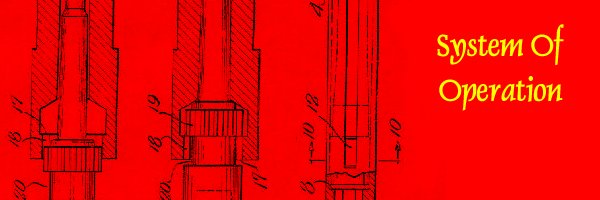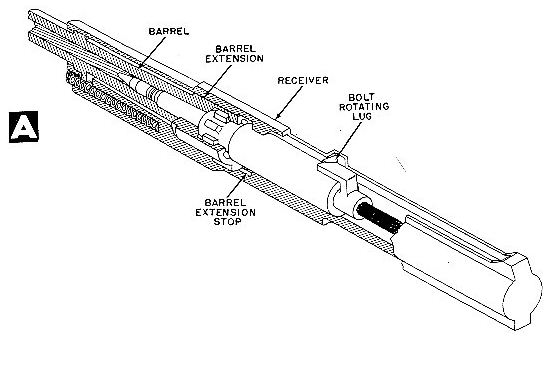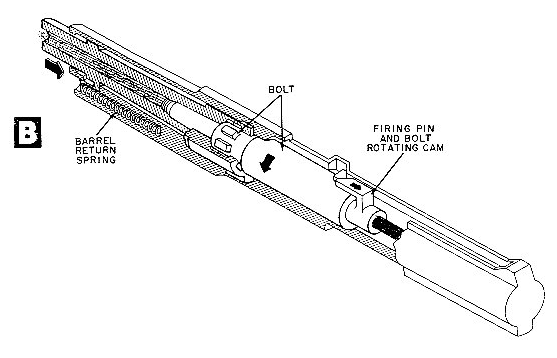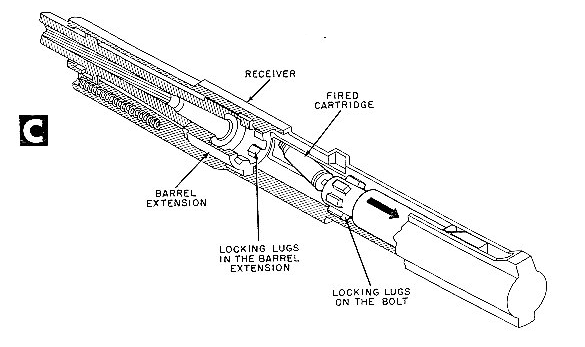


The rifle is loaded and cocked and is now ready to fire (A)-

The weapon fires a round which causes the barrel to recoil against the tension of the barrel recoil spring and the mainspring, via the bolt. When the bullet reaches the muzzle, the barrel has recoiled about 1/64 inch; when the bullet is approx. 2 feet from the end of the muzzle the barrel has recoiled about 1/8 inch. The camming arm on the bolt now engages the camming face in the receiver which causes the unlocking process to begin.After the bullet has travelled about 5 feet from the muzzle the barrel has recoiled its full 5/8 inch and the bolt has rotated 20 degrees and is fully unlocked. (B)

The rearward motion of the barrel is stopped by a shoulder machined into the receiver. Inertia and remaining chamber pressure now makes the bolt travel in its rearward direction. The extractor gives the case a sharp tug and the bolt recieves a similar sharp blow from the locking cam . (C)

This rearward motion of the bolt now cocks the hammer and the extracted case now engages the ejector, which causes the case to be thrown out of the rifle's right side ejection port. the bolt is now halted in its rearward travel by the forward end of the link bringing it up against the bolt stop.. The head of the bolt is now behind the base of the next unfired cartridge in the top of the magazine.
The bolt, due to the tension of the mainspring is now forced forward. It picks up the cartridge from the magazine and forces it into the chamber. The locking lugs enter the barrel locking bushing, and the bolt now rotates 20 degrees back into the locked position and is ready to fire.
Tension on the trigger has to be released between shots, and after the last round has been fired the bolt will stay in the open position.
Photo at top of page shows Melvin Johnson test firing the Rifle

